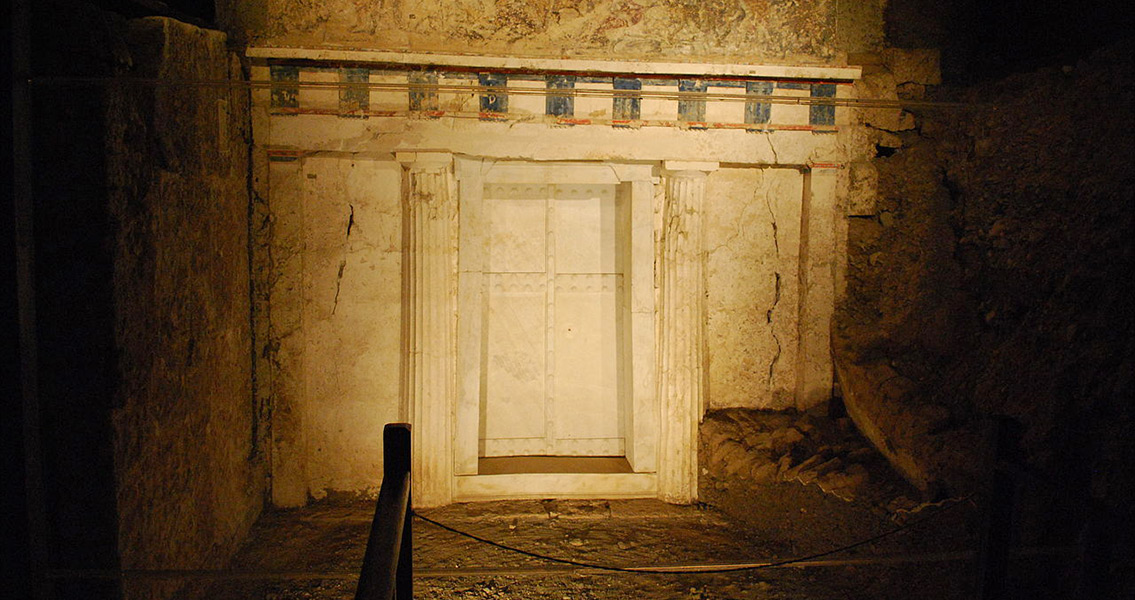<![CDATA[A royal Macedon tomb discovered in 1977 has had scientists debating the identity of its main occupant for decades. Some say it is Philip II, Alexander the Great’s father, but others claim it is Alexander’s half-brother, Philip III, who succeeded him to the throne. Evidence has been scarce in both directions but now a new paper has been written that focuses not on the male skeleton in the tomb but on his female companion. A team led by Theodore Antikas from the Greek Aristotle University spent five years conducting forensic examinations on the two skeletons. While they failed to find any definitive evidence helping to identify the male occupant of the tomb as either Philip II or Philip III, by focusing on the female skeleton they have suggested the male one belonged to Philip II. The team claimed the woman was a Scythian princess, aged between 30 and 34, a claim they based both on the bones and the presence of a variety of artefacts, including a quiver with 74 arrowheads, a few spears, and a Scythian bow case, Live Science writes. Antikas told Live Science in an e-mail that all the objects in the tomb’s antechamber apparently belonged to its female occupant and nothing could be linked to the male remains. He added that this suggested the woman was Philip II’s seventh wife, the daughter of the Scythian king Ateas. In addition to the artefacts, the team found she was a habitual horse rider and had suffered a broken leg in the past meaning one leg was shorter than the other, which is why her protective leg gear was different lengths. As for the male skeleton, the researchers tried to find any marks on it that could be used for identification, like University of Bristol anatomist Jonathan Musgrave had done in the 1980’s. He reconstructed the face of the male occupant of the tomb and claimed there was a notch in the bone above one of the eyes, corresponding to a wound sustained by Alexander’s father in battle. Later, however, another scientist, paleopanthropologist Antonis Bartsiokas, argued that the notch noted by Musgrave as a distinguishing mark of Philip II had been a result of the cremation that the body underwent. Cremation is the second line of argument regarding the identity of the tomb’s male occupant. When a dead body is cremated soon after death, with the flesh still on it, bones tend to bend. When the body has stayed in the ground for some time, the bending is not so pronounced as there is not so much flesh. While Philip II was cremated soon after he died, Philip III was first buried, then exhumed a year later and given a royal funeral, including cremation. So far, neither of the two opposing camps has presented any conclusive evidence about the extent of bone bending that would unquestionably tip the scales in one direction or the other. Most scientists that Live Science contacted asking for comments on the new paper, which has been approved for publication by the International Journal of Osteoarchaeology, declined to comment, but one who did was anthropologist Maria Liston from Canada’s Waterloo University. She told Live Science that the dating of the female skeleton was “overconfident” and it was impossible to give such a narrow range given the methods used. What’s more, she said that the Greek team had based its dating in part on the status of the body’s collarbones and the extent of their fusion with the sternum. Liston said that this fusion was usually complete by the age of 29 but the team’s data actually suggested the woman was younger than this, which meant she may have been Philip III’s wife, Eurydice, who was about 20 when she died. It seems the mystery will remain for the time being until some new evidence presents itself or technology develops to a stage that can yield more conclusive results. For more information: New Finds from the Cremains in Tomb II at Aegae Point to Philip II and a Scythian Princess Image courtesy of Wikimedia Commons user: Panegyrics of Granovetter (Sarah Murray) ]]>
New Paper Tackles Macedon Royal Tomb Mystery
